
A College Second to None
A College Second to None
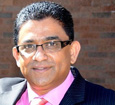
1912 was the big year for St. Michael’s College, a year in which the Catholic Diocese began to see its hopes and dreams realized after nearly Fifteen years of frustrating struggle and sacrifice. “Batticaloa”, Bishop Lavigne insisted, “shall have a college second to none”. One thing that Bishop wanted to be assured of was a stable and competent staff for the college. He was short-handed with his priests and wanted to commit as few of them as possible to the actual work of the classroom. So, he applied for the teaching Brothers, and Marists Brothers agreed to come to Batticaloa. There were Five Brothers and their veteran Director, Bro.Pierre Leon, who taught for some years in Aden, was 29 years old; Bro.Lawrence was 18, Bro.Anthony 17 and Brothers Paul and Chrysostom were hardly older. The people of Batticaloa were fascinated at the sight of this group of youthful Religious, and their future pupils hardly knew what to make of “Swamis” who were just about their age. The Brothers were French (two Alsatians), and only the Director was fluent in English, so they had first to settle down and study the languages. The Brothers were housed in a bungalow opposite to the esplanade (later named as Weber Stadium) and named the bungalow, “Maris Stella”.
On July 16, 1912, the Brothers were present at the solemn ceremony of the laying of the corner stone of the new and great St. Michael’s College. Sir.Henry MacCallum did the honours, and among the distinguished guests were H.R.Freeman, former G.A. of Batticaloa who had come especially for the occasion, C.S.Vaughan, G.A., Capt. W.M.F. Sandeman, A.D.C. to His Excellency, J.N.Tesseverasinghe, T.W.Roberts, District Judge, H.Bawa, Provincial Surgeon, and all the Maniagars, Adigars, Vanniahs, Odears, Mudaliyars and other important people of the province. Mr. Joseph Abraham, veteran Headmaster of St. Michael’s, knew that MacCallum held the order of the Grand Cross of St. Michael’s and St. George, the motto of which Auspicium Meliors Aevi(“augury of a better age”), and he made these words the theme of his address, expressing a common wish that they would hopefully be realized in the new college. In his speech the Governor said: “I regret very much that His Lordship Bishop Lavigne is not present. His Excellency also made the statement that “what we want of Ceylonese boys is spirit and self-confidence.
The Old Boys’ Association of St. Michael’s had been started in 1909 by Fr.D’Arras, and Fr.S. Lazarus was its first President. In 1912, the college presented its first candidates for the Junior Cambridge examination in Colombo. The science hall, said to be the one of the best designed and equipped in Ceylon at that time, was blessed in a quiet ceremony in 1913, and named MacCallum Hall.
On January 25, 1915 St. Michael’s College reopened for the year not as yet in its new quarters but with every prospect that, as Fr.Ferdinand Bonnel, Bro.Joe Wright and a dedicated work force toiled at the construction without a break. In the meantime, the results of the Cambridge examinations revealed that the college had 100% success in the Junior level and 5 out of 7 in the Senior, with one second class honours. In April, Governor Sir Robert Chalmers visited Batticaloa, but for reasons not known, declined to open the new classrooms. On May 3rd, Mr.Harward, Director of Education, did the honours. In his speech, Mr.Harward drew attention to the great struggle of the Fathers in financing the construction and said that they “faced obstacles with the same courage which our gallant allies in France and Belgium have shown in the field”. Mr.Harward, in the name of the government, gave a gift of 5,000.00 rupees to the building fund. The building was still far from completion, but the shape of things to come was plain to see – fulfillment of Bishop Lavigne’s promise that Batticaloa would have a college “second to none”. The administration section and Fathers’ quarters were still under construction, but the classroom block and boarders’ dormitory were ready. There were 150 boarders and 200 day scholars. Three Marist Brothers remained on the staff. Also on the staff were Mr.A.R.P. Leetham, who composed the College Anthem, Mr.M.A.L. Kariapper, Mr.K.Muttiah, a pupil teacher who would later be known as Fr.K.Aloysius-Mary S.J., Mr.E.R.Daniel, later to be Fr.R.Daniel S.J.. Six members of the college staff were former students and Mr. Joseph Abraham was continuing his fine work as headmaster. St. Michael’s now had quite a respectable list of old boys who were settled in government posts and professions, and three of her old boys were priests in the diocese. In 1917, Mr. Joseph Abraham was awarded the Bene Merenti medal by Pope Benedict XV1 for his long and excellent service to St. Michael’s College as its Headmaster.
1923 was the Golden Jubilee year of St. Michael’s. As the new building was not yet completed, the Fathers were reluctant to hold any elaborate celebrations of the event. By 1923, St. Michael’s counted 93 old boys with Cambridge certificates- 67 Junior, 26 Senior. Now, the college was given the rank of Secondary School by the government, in recognition of the excellence of its chemistry and physics departments. St. Michael’s pioneered in the introduction of electricity into Batticaloa as Fr.Bonnel had installed an electric plant, with Tudor batteries.
At the end of 1925, Mr. Joseph Abraham, veteran Headmaster of the college retired after 49 years of service. “The building”, he said, “Which was dubbed a ‘shanty’ by Governor MacCallum has been replaced by a palatial structure, one of the finest in Ceylon”. Mr. Abraham reminisced about the opposition the Fathers had encountered in the old days, the unhealthy rivalry, “which scrupled not to stoop to very questionable methods of ‘boys-catching’”.
1933 saw the start of a new era of the diocese and St. Michael’s college, when the Jesuit province of New Orleans in the United States agreed to help the aged missionaries of the diocese. Scholastic, John T. Linehan S.J. arrived on September 17th of 1933. In 1934, two more scholastics, John O’Connor S.J. and John W.Lange (Author of Palm Fringed Coast) arrived from New Orleans. In spite of the magnificent progress made in equipping St. Michael’s college, it was still something pretty much out of the 19th century, and the brash young Americans, accustomed to the technological convenience of the United States, found things rather primitive in Batticaloa. There was progress, to be sure, but it seemed to have stopped many years back. Looking back now after thirty-six years, the American priests were quite unaware of what St. Michael’s meant for Fr.Bonnel and other Fathers, unaware too of prodigious sacrifices they had made in order to bring the school and diocese to the degree of progress they had achieved. They had put their best years of their lives into their work, and the fact that they were not able to advance further, handicapped as they were not only by advancing years and declining physical strength but also by shortage of personnel and resources, was certainly not a matter of their choice. The Americans wanted to get things moving, to introduce American ways and bring things up to American standards. They would learn in the years to come, after they had encountered some of the obstacles and frustrations so familiar to the French Fathers!
To be continued…………….
Source: Palm Fringed Coast by Rev.Fr.John W.Lange, S.J.
History of St.Michael's College

In The Year 1868 Fr.Francis Xavier Philip the first Tamil secular priest of Ceylon was Sent to Batticaloa by The Bishop Jaffna , Who Was also in Charge of the East Mgr Christoper Bonjean, With a sum of Rs 500 to start a boy's English school in Batticaloa.
Music Legend of Batticaloa
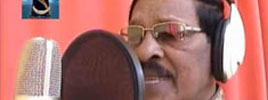
Jeevam Joseph Arulanandam was born in Amirthakali, Batticaloa into a musical family. Since his early childhood, he had great interest in anything related to music. As a young boy, he started to play numerous musical instruments. Music was his passion and been part of his life.
History of Past Pupils' Association [North America]
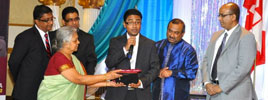
The views and experience expressed in this article are personal and my own and based on my fraternization with the members of the Past Pupils’ Association of St.Michael’s College, Batticaloa – North America from its inception in 1990
Father Eugene John Hebert S.J

The game of basketball became an ‘ET’ phenomenon straight from the outer space, under the watchful narrow eyes, covered by thinly rimmed glasses on the frame of a slightly hunched, yet tall Fr.Hebert.
A College Second to None
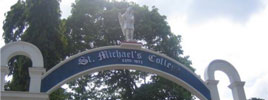
1912 was the big year for St. Michael’s College, a year in which the Catholic Diocese began to see its hopes and dreams realized after nearly Fifteen years of frustrating struggle and sacrifice.
Glimpse into the history
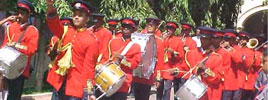
A glimpse into the history of St. Michaels College always inspires me. I am more convinced, when I delve into, that the story of St. Michael’s College is intertwined with the modern history of Batticaloa.


SMC - North America
FacebookSMC - Global Forum
Facebook